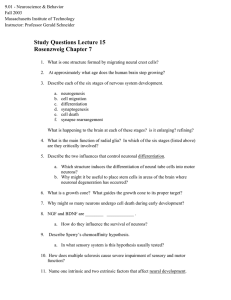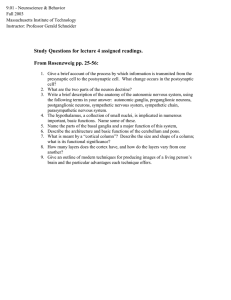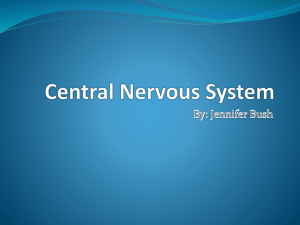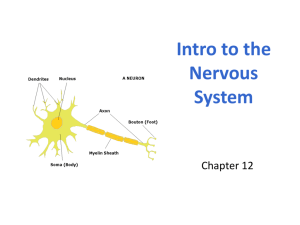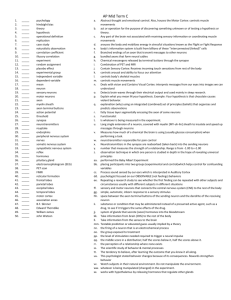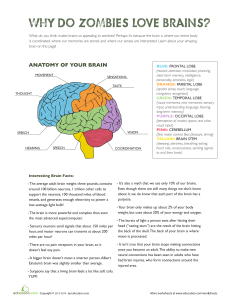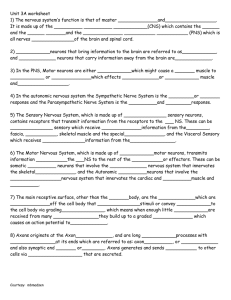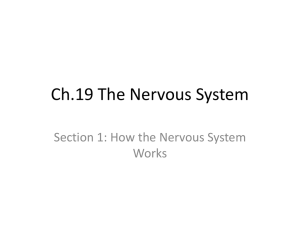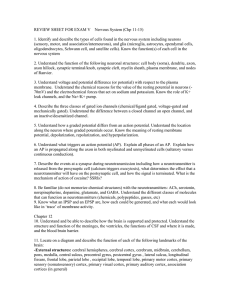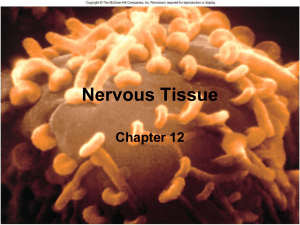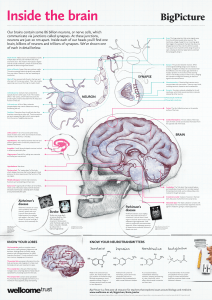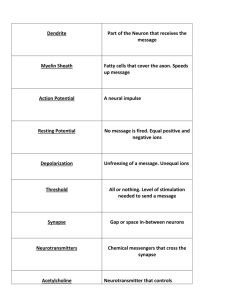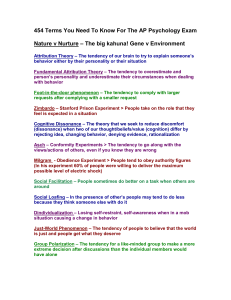BIOL&241- Summer 2009 Final Learning Objectives (Ch 12-16)
advertisement
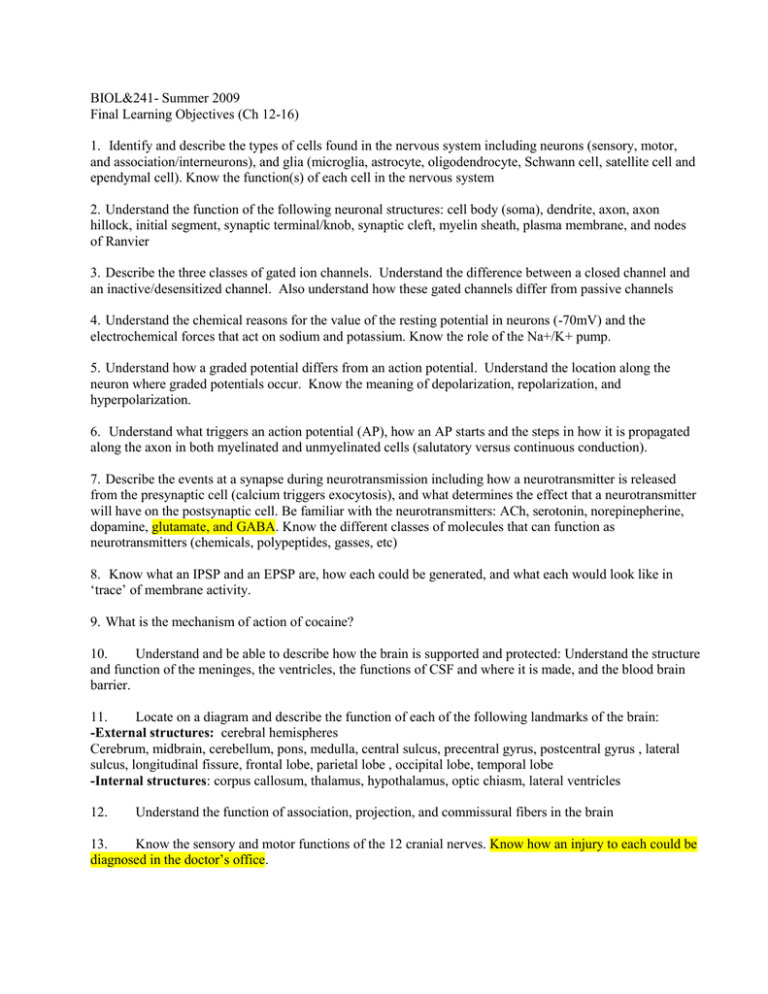
BIOL&241- Summer 2009 Final Learning Objectives (Ch 12-16) 1. Identify and describe the types of cells found in the nervous system including neurons (sensory, motor, and association/interneurons), and glia (microglia, astrocyte, oligodendrocyte, Schwann cell, satellite cell and ependymal cell). Know the function(s) of each cell in the nervous system 2. Understand the function of the following neuronal structures: cell body (soma), dendrite, axon, axon hillock, initial segment, synaptic terminal/knob, synaptic cleft, myelin sheath, plasma membrane, and nodes of Ranvier 3. Describe the three classes of gated ion channels. Understand the difference between a closed channel and an inactive/desensitized channel. Also understand how these gated channels differ from passive channels 4. Understand the chemical reasons for the value of the resting potential in neurons (-70mV) and the electrochemical forces that act on sodium and potassium. Know the role of the Na+/K+ pump. 5. Understand how a graded potential differs from an action potential. Understand the location along the neuron where graded potentials occur. Know the meaning of depolarization, repolarization, and hyperpolarization. 6. Understand what triggers an action potential (AP), how an AP starts and the steps in how it is propagated along the axon in both myelinated and unmyelinated cells (salutatory versus continuous conduction). 7. Describe the events at a synapse during neurotransmission including how a neurotransmitter is released from the presynaptic cell (calcium triggers exocytosis), and what determines the effect that a neurotransmitter will have on the postsynaptic cell. Be familiar with the neurotransmitters: ACh, serotonin, norepinepherine, dopamine, glutamate, and GABA. Know the different classes of molecules that can function as neurotransmitters (chemicals, polypeptides, gasses, etc) 8. Know what an IPSP and an EPSP are, how each could be generated, and what each would look like in ‘trace’ of membrane activity. 9. What is the mechanism of action of cocaine? 10. Understand and be able to describe how the brain is supported and protected: Understand the structure and function of the meninges, the ventricles, the functions of CSF and where it is made, and the blood brain barrier. 11. Locate on a diagram and describe the function of each of the following landmarks of the brain: -External structures: cerebral hemispheres Cerebrum, midbrain, cerebellum, pons, medulla, central sulcus, precentral gyrus, postcentral gyrus , lateral sulcus, longitudinal fissure, frontal lobe, parietal lobe , occipital lobe, temporal lobe -Internal structures: corpus callosum, thalamus, hypothalamus, optic chiasm, lateral ventricles 12. Understand the function of association, projection, and commissural fibers in the brain 13. Know the sensory and motor functions of the 12 cranial nerves. Know how an injury to each could be diagnosed in the doctor’s office. 14. Locate on a diagram and describe the function of each of the following spinal structures: ventral (anterior) root, ventral horn, dorsal (posterior) root, dorsal horn, spinal nerves, sympathetic ganglia, communicating rami, white ramus, gray ramus, white matter and gray matter 15. Understand a simple, monosynaptic reflex arc (2 neurons) and a more complex, polysynaptic one (3 neurons). Give an example of each in the body 16. Understand the structure and function of the ascending sensory and descending motor pathways both generally and specifically for sensory (posterior columns, anterior and lateral spinothalamic tracts, and spinocerebellar tract) and motor (corticospinal, medial and lateral pathways). Compare and contrast the sympathetic and parasympathetic divisions of the autonomic nervous system including the origin of the preganglionic neuron, the site of the synapse, the neurotransmitter used at each synapse. Know the functions of both the sympathetic and parasympathetic nervous system and the effect of each on the major organs of the body. 17.
